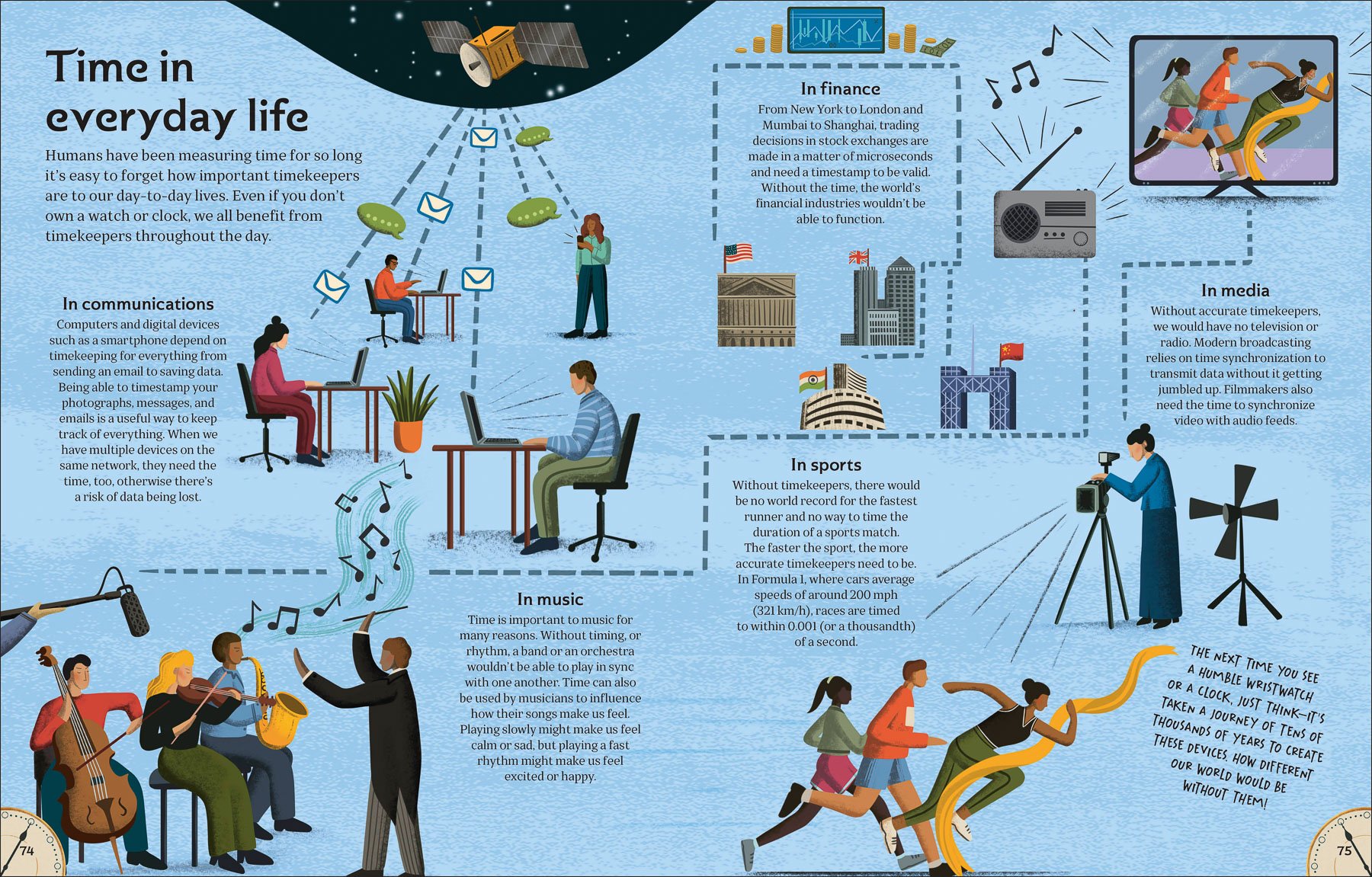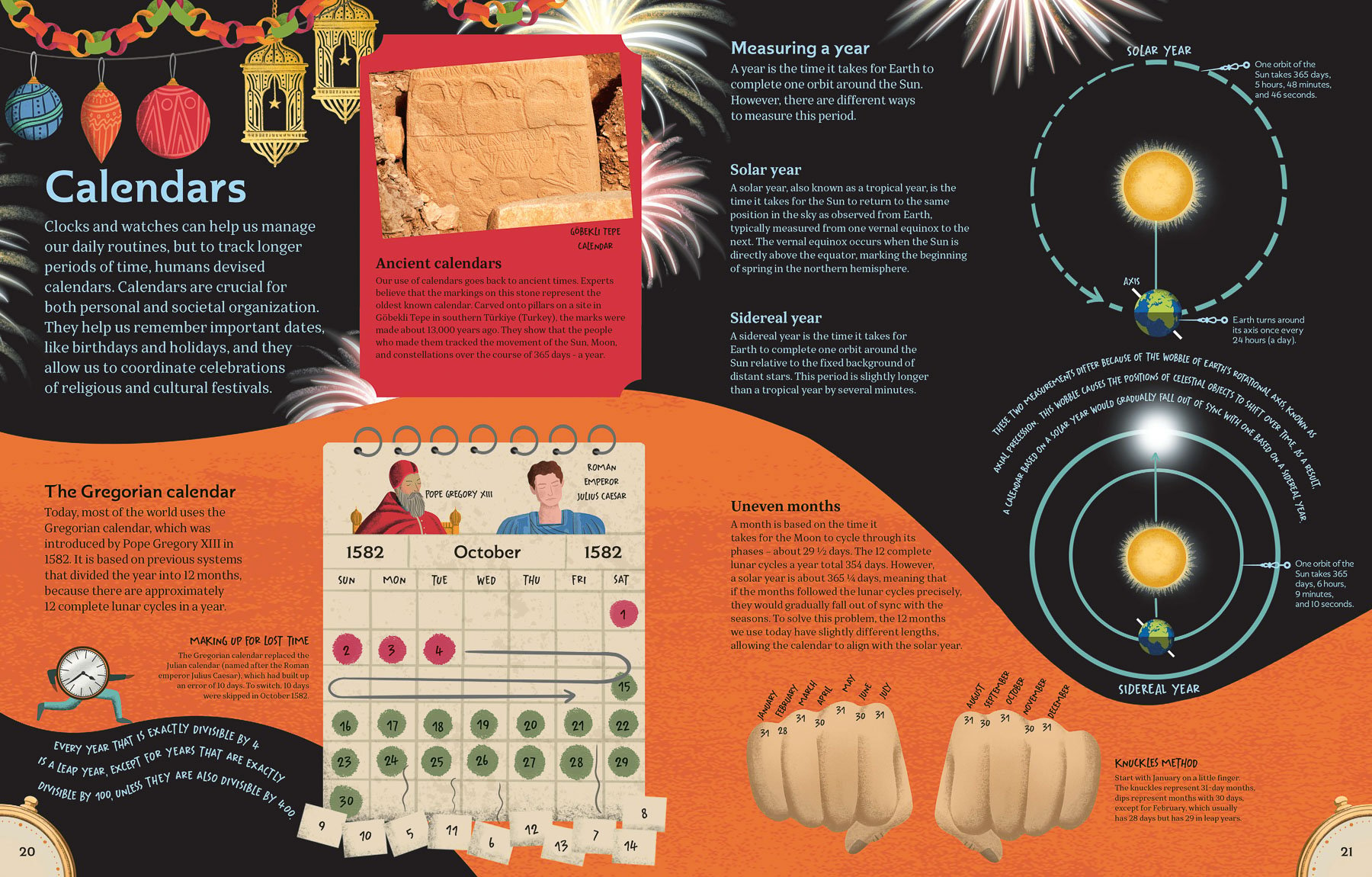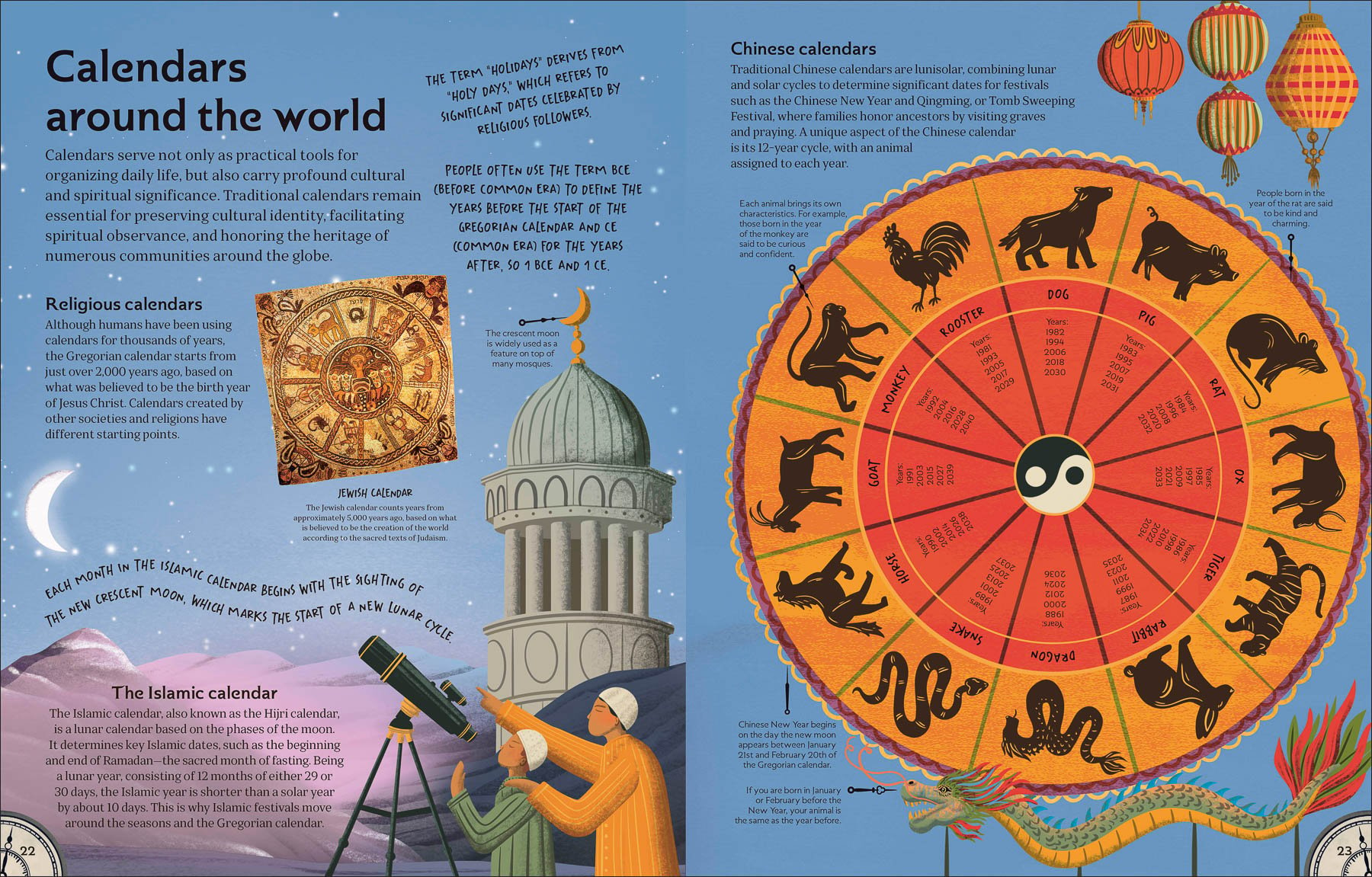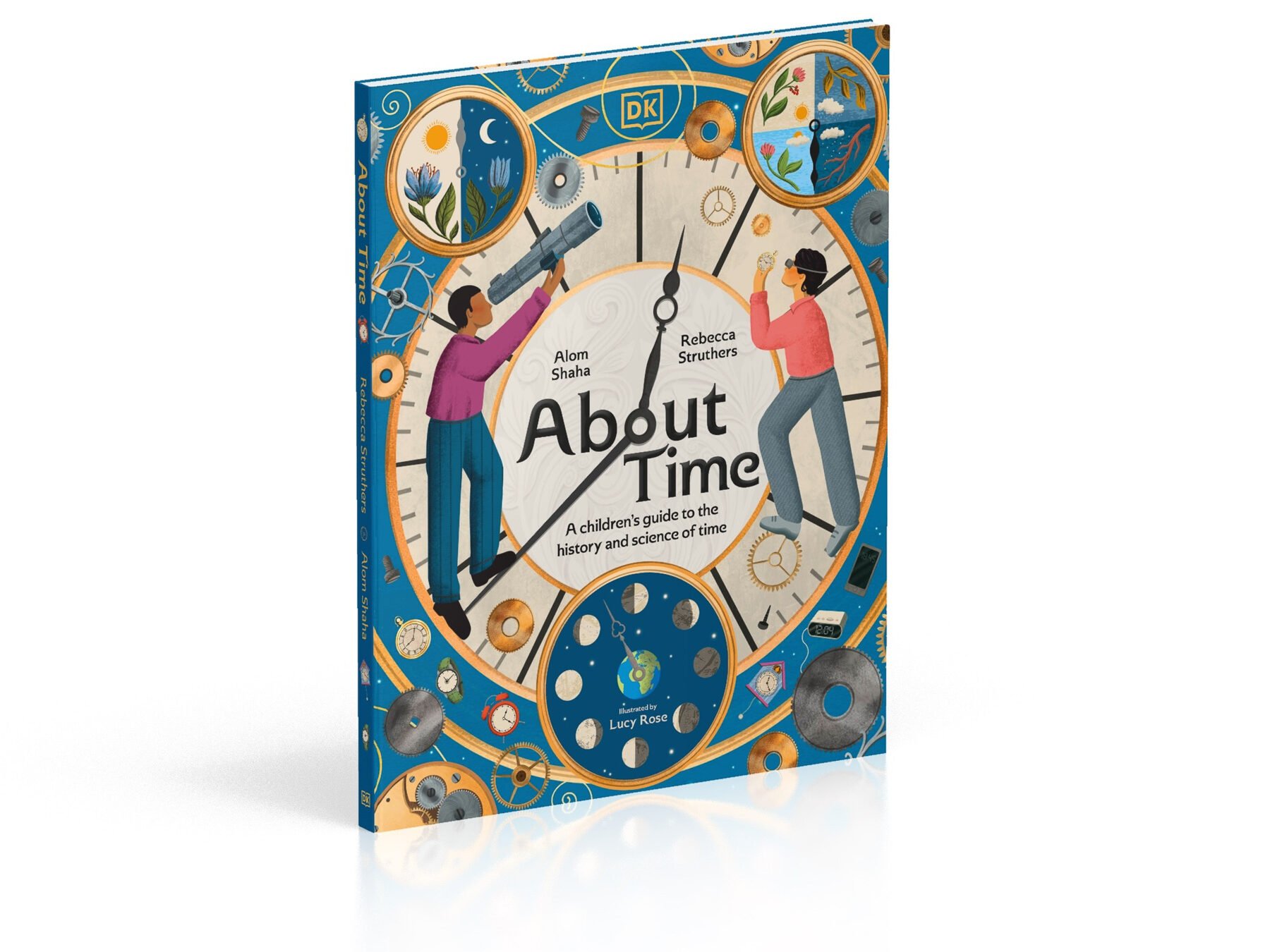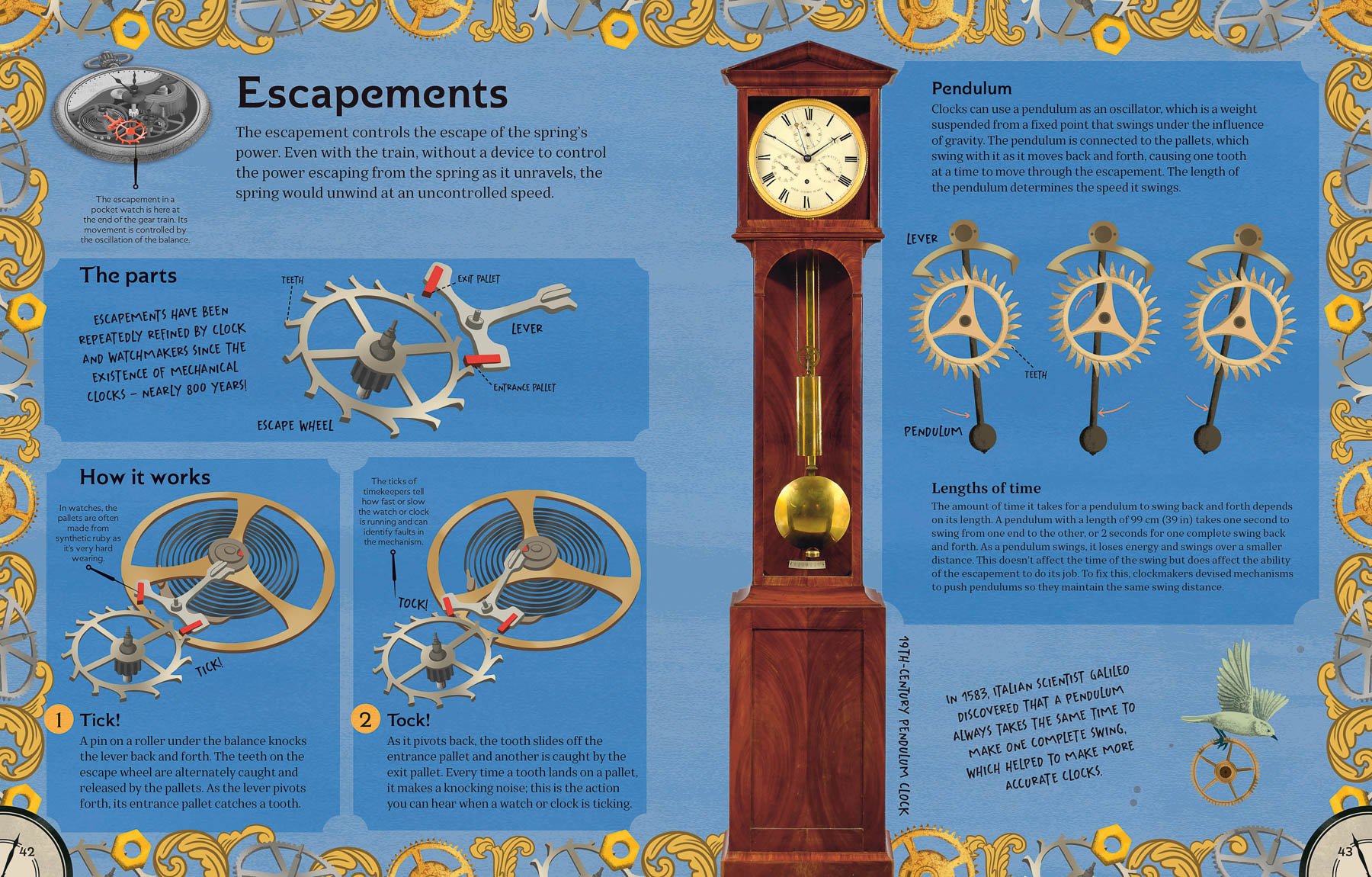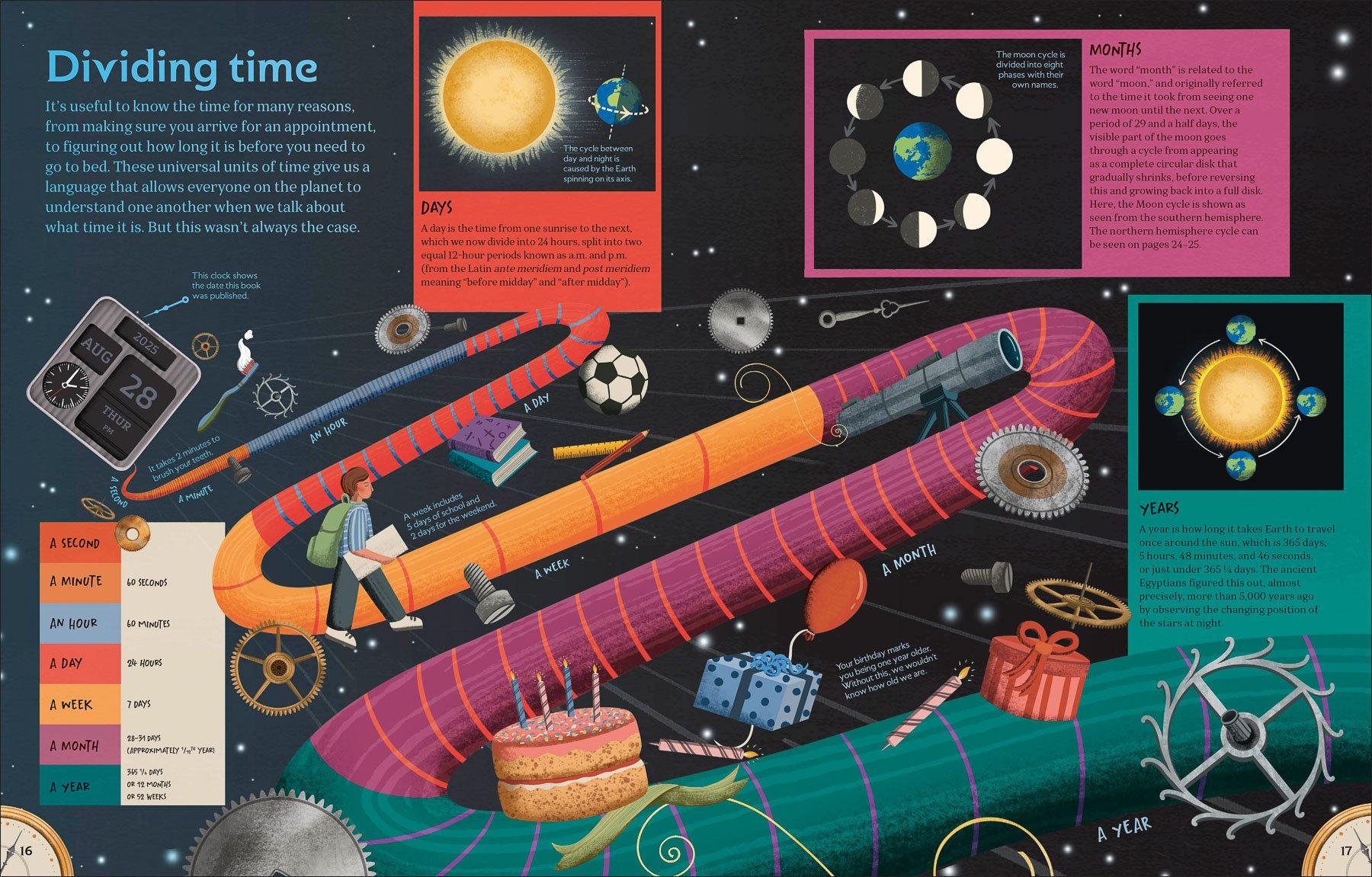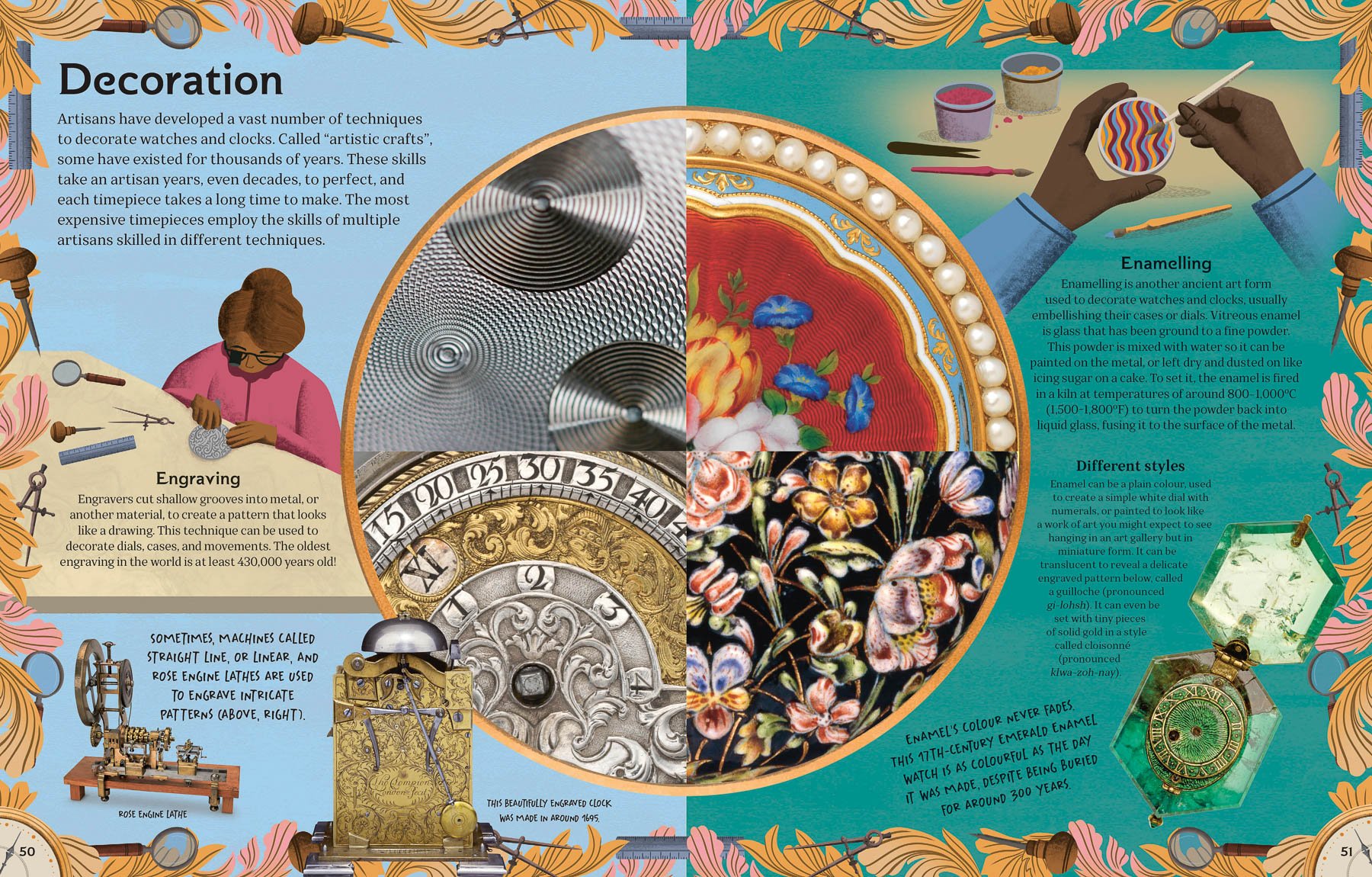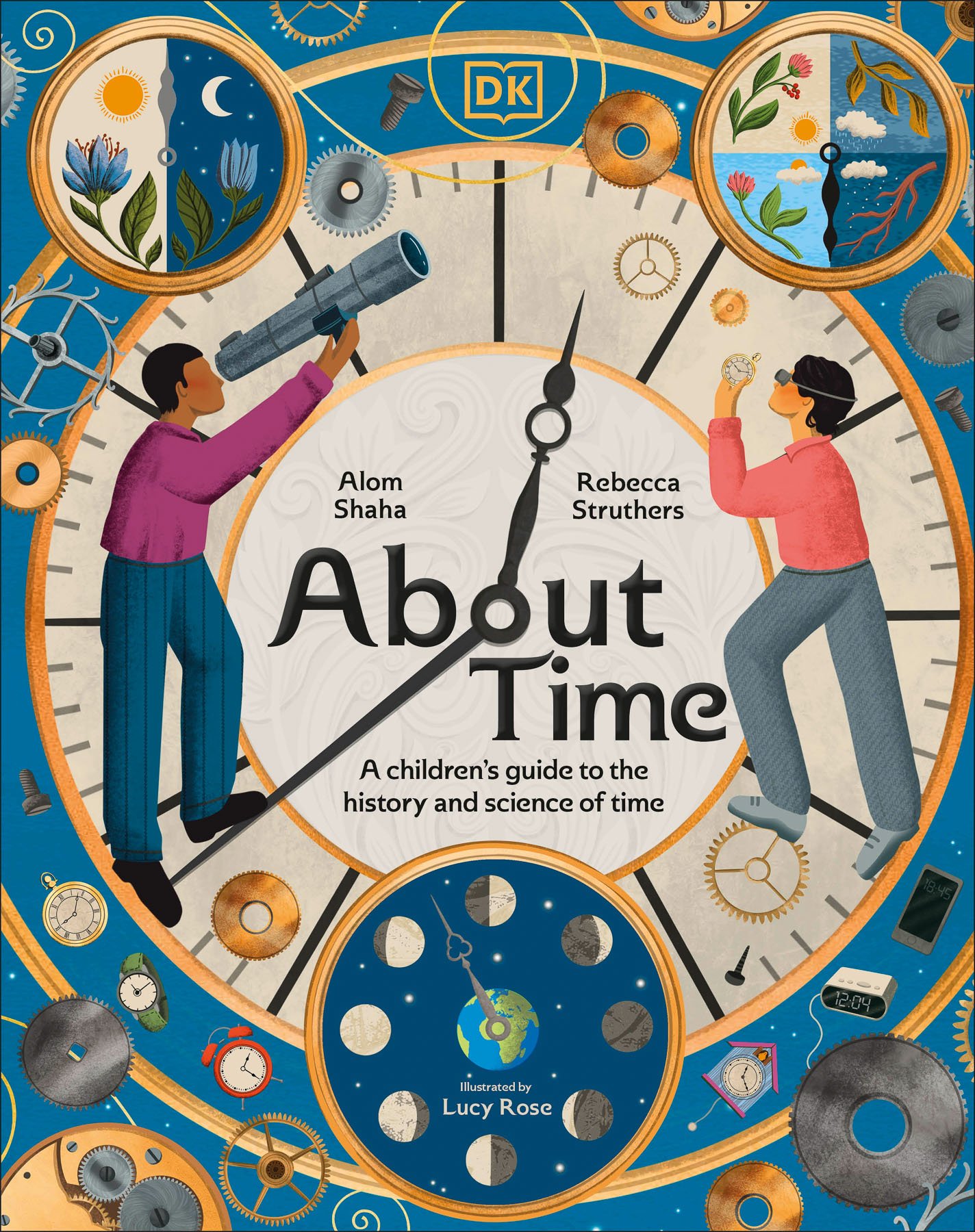About Time — How Two Writers Made The Most Elusive Concept Kid-Friendly
Time is one of those slippery concepts that even adults struggle to define. We live by it, complain we don’t have enough of it, and try to manage it with apps and alarms, but ask a child to explain it, and you’ll likely get a blank stare or a shrug. That’s what makes About Time: A Children’s Guide to the History, Science, and Philosophy of Time such an extraordinary feat. Co-authored by acclaimed watchmaker and historian Dr. Rebecca Struthers and science teacher and children’s book writer Alom Shaha, About Time explores the vast and complex topic of time in a way that’s both accessible and deeply engaging for young readers. It spans ancient timekeeping traditions, modern science, and philosophical wonder, all in under 100 pages and with beautifully illustrated clarity.
“There is a common piece of advice given to writers, ‘write the book you want to read,’ and this applies to About Time,” says Shaha. “We noticed there were no books for children covering the things we found interesting about horology, so we decided to write one.”
Why a children’s book on time is necessary
Despite coming from different professional worlds, Struthers and Shaha share a vision — to demystify time for children while highlighting the global, multicultural story of how humans have tracked it for millennia. The history of time is, after all, the history of humanity, and it unites us all. Struthers, who normally writes for adults, restores historical timepieces, and creates new watches at C & R Struthers Watchmakers, didn’t initially see herself writing for kids. “I’ve never written for this age group before, and it’s not something I could have done without Alom’s support and guidance,” she says. “Collaborating with him has been such an educational experience for me.” For Shaha, a veteran educator and science communicator, making the abstract feel concrete is part of the job. “There is so much that is interesting about the science and history of timekeeping that it was not hard to come up with engaging content.”
It seems these writers share a desire to make complex ideas accessible to everyone, especially children. That clarity doesn’t come at the expense of nuance. About Time doesn’t just teach how clocks work but also introduces Einstein’s theory of relativity, explains the importance of lunar calendars, and even nudges readers to reflect on their perception of time. “Time is absolutely central to our experience of being conscious, of being alive,” Shaha says. Struthers agrees, adding that part of the book’s goal was to foster a healthier relationship with time itself. Their mission goes beyond education; it’s also about inspiration. Struthers hopes the book plants seeds of curiosity that could lead to new paths for young readers. “We have a global shortage of watchmakers,” she notes. “But no child or young adult will pursue a career they don’t know exists.”
A global history of time
What makes About Time stand out among science books for kids is its global perspective. Rather than presenting timekeeping as a Western invention, the book explores how ancient civilizations worldwide measured time — through stars, water, shadows, and sand. This inclusive approach was intentional. Timekeeping didn’t begin with clocks; it started with people noticing patterns, day and night, seasons, and the movement of the Moon. “I find sundials fascinating because they’re tied to the spinning of the earth and so connected to the first natural cycle that humans must have used to measure time,” Shaha said. Struthers’ favorite method of ancient timekeeping is even more poetic: “Mine is also my favorite horological complication, tracking the phase of the Moon,” she says. “I find it incredible that many of the most complicated watches being made in the world today measure the same thing our ancestors used.”
The book weaves these perspectives into something more than just a science lesson; it becomes a story of human ingenuity. Children are introduced to Chinese water clocks, Islamic astronomical timekeepers, and Mesoamerican calendar systems, all through bright illustrations and clear explanations. Struthers points out how quickly some of these ancient skills are being forgotten. “Even the clocks in classrooms are digital now, so [kids are] also growing up lacking key skills like reading analog time,” she says. “That was a real wake-up call and inspired me to do more to help engage younger audiences.” The result is a book that doesn’t just educate but also invites children to see themselves as part of a larger, older story, one in which people across time and place have tried to make sense of something we all feel but cannot see.
A visual language for the invisible
You can’t draw “time,” but illustrator Lucy Rose somehow makes it feel tangible. Her playful visuals in About Time bring ancient devices, abstract theories, and mechanical intricacies to life, turning a daunting topic into something kids want to flip through again and again. According to both authors, the visual approach was just as essential as the writing.
“Alom and I chose Lucy Rose early on as we loved her style and knew it would work perfectly for this book,” says Struthers.“Her illustrations are very bright and colorful, and watches and clocks are often very bright and colorful both inside and out.” The process was deeply collaborative, with text and visuals evolving in tandem to ensure clarity. “Writing a book in this way was an entirely new experience for me,” Struthers adds. “There’s a lot of bouncing back and forth between the design and the writing, editing, and re-editing to make sure the two complement each other.”
The team effort extended beyond the authors and illustrator. Designer Charlotte Milner and editor James Mitchem played crucial roles in shaping the book’s rhythm and accessibility, helping to balance the density of the material with the needs of a younger audience. Some concepts, such as escapements or time zones, required extra finesse. “Trying to neatly explain how escapements work, with just a couple of illustrations and a dozen or so words, was a challenge!” Struthers says. “But I love a challenge, and I think experiences like that are incredibly valuable for all horological communicators. We should be able to do things like that.” Ultimately, the collaboration paid off. About Time is a rare example of a nonfiction children’s book that doesn’t talk down to its readers. Instead, it invites them to explore and question — sometimes with words, sometimes with gears and glue.
Making relativity relatable
Albert Einstein and seven-year-old children don’t usually end up in the same sentence, but in About Time, relativity gets the kid treatment, and it works. The book introduces the mind-bending idea that time is not fixed but, instead, flexible depending on speed and gravity, all without venturing into equations or jargon. “We didn’t go beyond a descriptive explanation of what relativity tells us about the behavior of time,” Shaha explains. “We felt it was important that our readers were made aware of the way in which time behaves according to relativity and that they could appreciate this without a detailed explanation of how this behavior is a consequence of there being a maximum value to the speed of light in a vacuum.” In other words, the point wasn’t to turn kids into physicists; it was to spark curiosity.
Equally important was helping readers consider their relationship with time, beyond clocks and calendars. The book encourages introspection, asking how time feels, not just how it’s measured. That emotional angle is intentional. “Neither of us wanted to write a cold factual book,” says Shaha. “One of the most fascinating things about [time] is how we feel or experience its passing at different points in our lives or in different situations.” Struthers echoes that sentiment, tying it to a broader mission. “Highlighting our own time experience touches on a subject closer to my heart, which is having a healthier relationship with time,” she says. “There are so many ways of interpreting and measuring time, with none being more correct than another. It’s a hugely cultural and social experience. I have a far more relaxed temporal experience than I used to!”
Inspiring curiosity that ticks beyond the page
At its heart, About Time is more than a book about clocks and calendars; it’s a gentle nudge toward wonder — a tool to help young readers not only understand the world around them but also imagine their place in shaping it. Shaha hopes the book opens kids’ eyes to paths they might not otherwise consider. “A few of them might see that a career in watchmaking could be incredibly creative and rewarding.” For Struthers, the book is also a correction to the limited view of science and career paths she saw growing up. “Horology is a perfect subject for demonstrating that’s not how the real world works,” she says. “In it, we get to be scientists, historians, artists, and engineers, to name a few. You can be any or all of these things, and struggling at school doesn’t mean you’ll struggle in the real world.”
Final thoughts
In a world of fast-moving schedules, digital devices, and constant distraction, About Time asks readers to pause. To wonder. To notice the Sun casting a shadow, the rhythm of a ticking hand, or the quiet stretch of a long afternoon. Because in teaching children about time, Shaha and Struthers aren’t just telling them how it works. They’re also giving them permission to feel it, and maybe, for a moment, to make peace with it.

